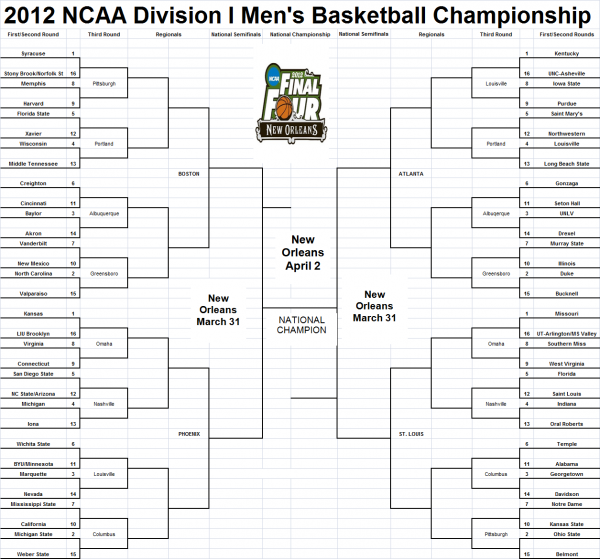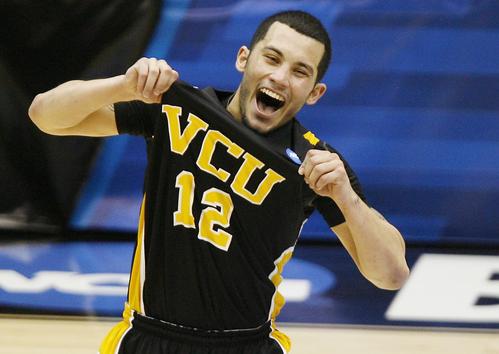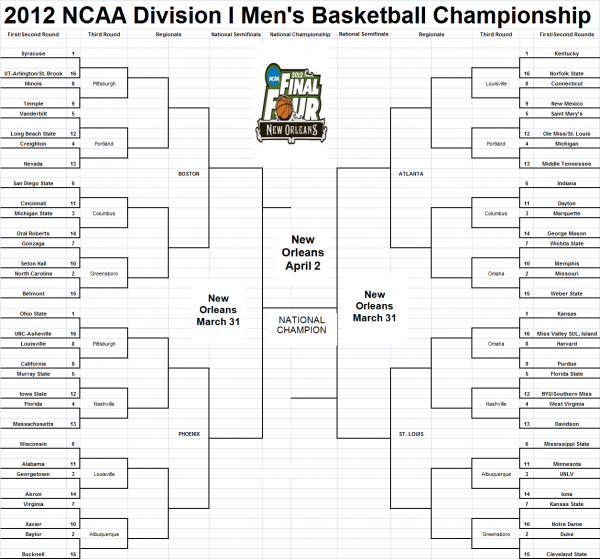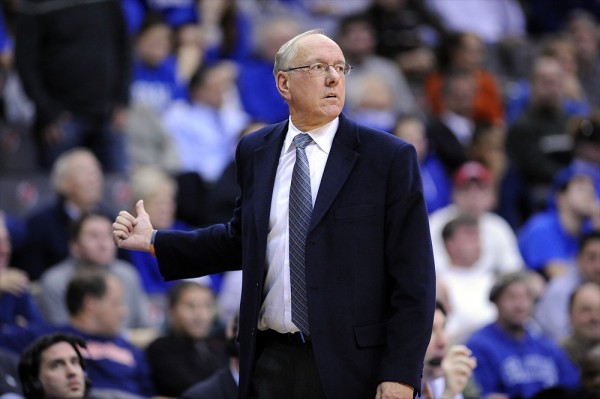Bubble Watch: 02.20.12
Posted by zhayes9 on February 20th, 2012Zach Hayes is an editor, contributor and bracketologist for Rush the Court.
Locks: Temple, North Carolina, Florida State, Duke, Missouri, Kansas, Baylor, Syracuse, Marquette, Notre Dame, Georgetown, Louisville, Michigan State, Ohio State, Michigan, Wisconsin, Indiana, Wichita State, Creighton, New Mexico, UNLV, San Diego State, Murray State, Kentucky, Florida, Vanderbilt, Saint Mary’s, Gonzaga.
Atlantic 10
Saint Louis (22-5, 10-3)- The Billikens tournament hopes could ride on how much the committee factors in their attractive computer numbers (21 RPI, 11 KenPom, 17 Sagarin) and discards a void in the quality win department. Their only decent wins came over bubble teams Xavier (road) and Washington (home) while missed opportunities at New Mexico and home vs. Temple loom large. A 10-3 conference record, stellar RPI and another win over Xavier when the Musketeers return to SLU on February 28 should be sufficient for a bid.
Xavier (17-9, 8-4)- The unpredictable Musketeers stayed on the right side of the bubble by dispatching Dayton in overtime on Saturday and their only opportunity for a resume-building win is the aforementioned meeting with Saint Louis. Avoiding a defeat at Massachusetts on Tuesday is paramount given Xavier’s already questionable losses against Hawaii, La Salle and Oral Roberts when their team was depleted by suspensions. Xavier does have impressive wins at Vanderbilt and home vs. Purdue, but both of those came before December 3. Their #54 RPI and #54 SOS screams bubble team.
ACC
Virginia (20-6, 7-5)- The Cavaliers have long been considered NCAA worthy but their overall portfolio is actually quite lacking. Their only two RPI top-50 wins came over Michigan back in November and a one-point home win over Miami, while regrettable losses to TCU, Clemson and home vs. Virginia Tech loom. The #231 non-conference strength of schedule is another anchor. The remaining schedule isn’t forgiving – revenge game at Virginia Tech, North Carolina, Florida State, at Maryland– but on the flip side there are two RPI top-20 scalps coming to Charlottesville. Win just one and Tony Bennett can breathe easier.
NC State (18-9, 7-5)- The Wolfpack just concluded a devastating week, blowing a huge second half lead at Duke and 48 hours later getting blown out of the water at home against Florida State. With only one RPI top-50 win after Texas fell out following their own crushing loss, State is barely our last team in. The only chance for resuscitation is by beating North Carolina at home on Tuesday and finishing off a sweep of Miami on February 29. They also face a tricky road game at Clemson sandwiched in between. The computer numbers (57 RPI, 38 SOS, 29 non-conference SOS) are respectable.
Miami (16-9, 7-5)- At the moment, the Canes are pinning their tournament hopes on that crucial road win against Duke on Super Bowl Sunday because they have absolutely nothing else. Their next best wins by RPI is UMass at home, largely because all their important non-conference games – at West Virginia, at Purdue, Memphis– were played without star center Reggie Johnson. The Canes were also swept by North Carolina, lost at Virginia and Florida State and fell to NC State at home. The Seminoles return date on February 26 is a must win or the resume will be too empty to deserve serious consideration.
Big 12
Iowa State (19-8, 7-5)- The most difficult portion of the Cyclones schedule is yet to come with games at Kansas State, at Missouri and home vs. Baylor to wrap up the regular season. Winning either road game would solidify their bid, but even downing Baylor in Ames would give them home wins over Kansas, Baylor and Kansas State, likely enough to punch a ticket in this bubble climate. Iowa State has average numbers (42 RPI, 35 KenPom, 36 Sagarin) and bad losses at Drake, home vs. Northern Iowa and at Oklahoma State. They beat fellow bubble team Texas 77-71 at home in their only meeting.
Kansas State (18-8, 7-7)- The #59 RPI, #250 non-conference SOS and sweep at the hands of Oklahoma are setbacks, but their overall profile appears solid after Saturday’s enormous win at Baylor coupled with wins vs. Missouri, Texas and in the non-conference vs. Long Beach State and Alabama. Both KenPom and Sagarin like the Wildcats more than the flawed RPI, ranking Kansas Stateat #25 in the country. Tuesday’s trip to Missouri is basically house money with three winnable games vs. Iowa State, at Texas A&M and vs.Oklahoma State remaining on the Big 12 slate. Take care of business in those three and Frank Martin’s squad is in the field.
Texas (17-10, 7-7)- Tonight’s clash with Baylor in Austin is just as enormous to their tournament chances as Saturday’s bad loss at Oklahoma State. The young Horns don’t stand a chance at Kansas; with Texas Tech and Oklahoma their only other remaining games before the Big 12 Tournament, this is their golden opportunity to stay viable for the selection committee. The losses to Kansas and Missouri by a combined five points loom large. Their best wins to date are all at home vs.Temple, Iowa State and Kansas State. Texas has yet to beat a team in the RPI top 100 on the road.
















































